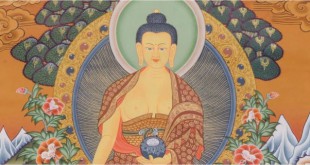 Kamla Kant Pandey — It was the agriculture science period for the ninth class at the Kshattriya High School at Jaunpur in Uttar Pradesh. The teacher, Thakur Bali Raj Singh, was examining the homework done by his students. The previous day he had asked them to write on “seeds dispersal”.
Kamla Kant Pandey — It was the agriculture science period for the ninth class at the Kshattriya High School at Jaunpur in Uttar Pradesh. The teacher, Thakur Bali Raj Singh, was examining the homework done by his students. The previous day he had asked them to write on “seeds dispersal”.
What one boy had written amazed him. “Kamla Kant,” he called. A shy boy stood up. “Are these your thoughts?” the teacher asked. When the boy nodded, the teacher asked, “Have you read Charles Darwin’s theory of evolution?” The boy showed complete ignorance. “Come here, please,” the teacher said. He patted the boy and, facing the students, said, “Kamla Kant Pandey has, on his own, written the theory which the great naturalist Darwin had put forward in the last century. I am sure Kamla Kant will one day be a great scientist.”
He could not have been more correct. Kamla Kant Pandey is today one of the most notable plant geneticists in the world. He is now head of the Genetics Unit, Department of Scientific and Industrial Research, New Zealand.
In 1975 he made the discovery of a revolutionary technique in plant breeding. By his technique selected genes of a flowering plant can be transferred to another plant. He made use of strong nuclear radiations to break the genetic material of a plant and separate the desirable genes from the undesirable. The discovery was hailed in New Zealand as “the most important discovery by a New Zealander since Lord Rutherford split the atom.”
Every gene controls some characteristic of a plant or an animal, for instance, height or color. by the conventional breeding techniques, when a cross is made between two plants, both the desirable and undesirable characteristics of the genes of the parents are transferred to the offspring. By Pandey’s technique only those genes of the parent plants that would give the offspring the desirable characteristics could be eliminated or suppressed. Plant breeders can thus improve the variety of a plant without wasting time and effort.
A gene known as the “S-gene” also governs whether a plant can self-pollinate or cross-pollinate. Pandey was among the first to point out that the “S-gene” also controlled the ability of a plant to cross with another species of plant. He studied the “S-gene” in detail and found that it was actually a nest of gene, a “super-gene”. His research showed that this super-gene was very important in the evolution of flowering plants. It produces chemicals that influence the breeding behaviour of plants.
Pandey also used the irradiation technique to change the mechanism of the “S-gene” and thus brought changes in the breeding behaviour of a plant. Thanks to his researches, cross-pollinating plants can now be “made” self-pollinating. Bees are no longer essential for cross-pollination.
Pandey was born on December 11, 1926, at Varanasi. He was the first Indian agriculture graduate to win the London Exhibition Scholarship. He joined the John Innes Institute in London to do research on plant genetics. After taking his Ph.D. in 1954, he went to New Zealand and settled there. In 1966 he was elected Fellow of the Linnean Society of London, a rare honour for any botanist. In 1970 he got the D.Sc. of London University. Besides his valuable discoveries and techniques, he has also put forward a theory of vertebrate evolution in animals.
 Kids Portal For Parents India Kids Network
Kids Portal For Parents India Kids Network






